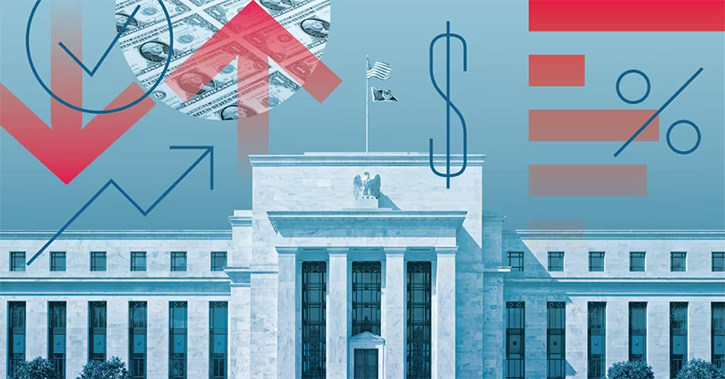Depending on your age and planned date of retirement, the makeup of your portfolio could – and should - vary greatly. Some time ago, we looked at whether a million dollars was enough to retire. Precise nest-egg numbers aside, what are the ideal allocations to have in your portfolio in order to maximize your retirement fund?
Andrew Dierdorf, portfolio manager at Fidelity Investments, says that on one hand, you must consider market movements – and ways to allocate asset classes and select securities based on their own risk and opportunity profiles. On the other hand, your behavior as an investor – your risk tolerance and savings rate – also play a big part.
“Saving early, often and at a high rate is the best protection [against changing markets],” says Ruthann Pritchard, institutional portfolio manager at Fidelity Investments.
However, with recent market volatility and an ever-uncertain global economy, it can be hard to keep up with ever-changing environments, as well as to maintain the patience and discipline necessary to avoid common investor mistakes.
Focus on the target
One way to commit to saving, without the drama, is target-date funds. Target-date funds are diversified based on an expected date of retirement and their allocations evolve as they near and pass retirement day - serving investors of all ages well.
Christine Benz, Director of Personal Finance at Morningstar often refers investors to target-date funds as a reasonable starting point of reference for allocation levels throughout the journey to retirement. Generally, target date funds become more conservative as the investor approaches and passes the expected date of retirement. As an example, Morningstar produces guidelines for investors in its Lifetime Allocation Indexes.
Pritchard and Dierdorf manage a range of target date funds called Fidelity ClearPath portfolios, which use both longer-term strategies as well as short-term active adjustments that respond to new opportunities and changing market environments.
Invest for your age
Assuming a target retirement age of 65, what are the allocations you should be having based on your age bracket?
Investing @ 25
This is for the millennial supersavers out there. “These investors have a long time horizon ahead of them,” says Dierdorf. These investors may have the lowest assets of the group, but the most to gain over time. It’s important at this age to get that capital working for you.
“If you are a younger investor, you need an asset mix that is aggressive enough to maximize your portfolio’s earning potential,” says Karen Wallace, Director of Investor Education at Morningstar, but she says the portfolio still needs to suit your risk tolerance.
Dierdorf says investors in this age group are diversified in such a way that it leverages the power of time against the markets, making bear risks for returns more tolerable while capturing opportunities for future returns.
“Bear markets are inevitable and it’s best to ride them out so your investments can take full advantage of the ensuing recovery,” adds Wallace. “Target-date funds can also give young investors a benchmark for targeting their exposure to international and emerging-markets stocks,” says Wallace, adding that young investors all-in equities and feeling seasick from the recent volatility might want to use target date funds as a benchmark for equity levels overall – generally around 80-90 percent at this age bracket, with the remainder in fixed income among target-date funds.
Investing @ 45
“These investors still have a long-time horizon ahead of them,” says Dierdorf, adding that they should be planning for the next 30, 40 and even 50 years. With a long working – and spending – life ahead of them, there is still a need to keep a sizable portion of the portfolio in equities.
The Morningstar Lifetime Allocation Indexes, which provide allocations based on three different risk tolerances, have this group at nearly 90 percent equities for the most aggressive approach, down to 54 percent for the most conservative approach.
Dierdorf says at this point the investor would want to maintain an equity position, but the portfolio would be more diversified.
Investing @ 60
Investors at this age should have accumulated a fair amount of capital says Dierdorf, but they still have a pretty long horizon ahead of them – adding that investors have a reasonable expectation of reaching age 80 to plan for.
These investors are at the height of human capital and wage income. They should still be making significant contributions and looking to appreciate their capital, but they’ll want to further decrease their equity exposure.
It’s at this age that market volatility should become a concern around retirement financing.
Soon-to-be retirees should approach their asset allocations with caution at this point, Benz. “Such investors have enjoyed a strong equity market for 20-plus years, but the next decade may possibly be lackluster for equities,” she says.
Investing @ 70+
Kudos to these investors for making it to retirement. But they’re not out of the woods yet. There’s a need to ensure the finances keep flowing through retirement and to best achieve that, the portfolio rebalancing must continue for another five, ten and even 20 years into retirement.
These investors have a lower income to account for, and as such their portfolios should still have a growing equity allocation. But fixed-income allocations become increasingly important after entering retirement. Benz emphasizes it’s important to combat "sequencing risk", or the chance of encountering a weak market environment at the outset of retirement. “New retirees should make sure their portfolios aren't skewing disproportionately toward stocks.”
And even after retirees have an optimal asset allocation, there’s still work to be done on the ‘un-allocation’ front. Managing withdrawals, that is, and adjusting rates around market movements – particularly when early into retirement. Benz says investors should be prepared to reduce their withdrawal rates if a bear market materializes early in their retirement years.




















